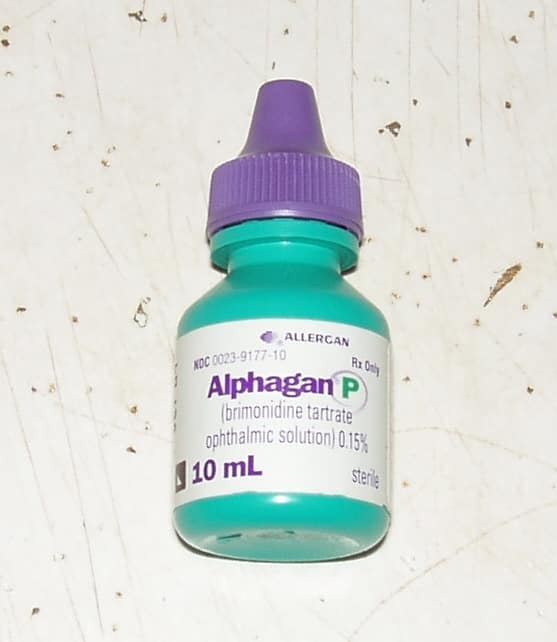Top 5 Eye Diseases and Conditions
The eye is probably the most complicated organ of the body after the brain. In fact, the retina is actually considered an extension of the brain because of the neuronal structure of its cells. It’s not surprising then, that there are a number of things that can go wrong in the eye.
The five most common diseases and conditions that affect the eye include:
- Refractive error
- Cataracts
- Corneal abrasions and foreign bodies
- Glaucoma
- Dry eyes
Corneal abrasions and foreign bodies, glaucoma and dry eyes can cause permanent blindness if not treated. However, there are treatments available for each of these conditions.
Refractive Error
By far the most common eye condition is refractive error, or the need for eye glasses. There are four types of refractive error:
- Myopia (nearsightedness)
- Hyperopia (farsightedness)
- Astigmatism (an irregular cornea)
- Presbyopia (the need for reading glasses)
Myopia is the most common of the four types and is the result of the eye being too long. This causes the image that’s supposed to land on the retina to land just in front of it resulting in a blurred image at distance. Patients with myopia can usually see very well up close and often prefer to remove their glasses when doing close work for prolonged periods of time. Myopia is easily corrected with glasses, contacts or refractive surgeries such as LASIK or IntraLASIK.
Hyperopia is not as common as myopia; however, it is still quite common. Patients with hyperopia can see fine at distance, but are unable to see images at close range. Although in some cases, patients are not able to see clearly at distances either. The blurred vision is caused by the being too short, causing the images to fall behind the retina instead of on it. Like myopia, hyperopia can be corrected with glasses, contacts or refractive surgery.
Astigmatism can be found in almost every patient. Someone with astigmatism has an irregularly shaped cornea. The cornea is supposed to be a perfectly smooth dome, but in someone with astigmatism, the dome is a bit bumpy. It is easily corrected with glasses and depending on the type of astigmatism, contacts or refractive surgery could also be an option.
Presbyopia is most commonly associated with those over the age of 45. Patients are unable to read up close, and often complain that their “arms aren’t long enough.” Reading glasses are the simple fix for this condition, which happens to everyone eventually. However, there are other options for treating presbyopia such as monovision, and bifocal contact lenses.
Cataracts
After refractive error, cataracts are the most common eye condition. Like presbyopia, cataracts are a result of the aging process. In fact, presbyopia is the initial stage of the formation of a cataract.
Cataracts are formed by the hardening of the crystalline lens, which sits behind the iris. The lens gives the eye about 30 percent of its focusing power (the cornea gives the eye the other 70 percent). As we age, the lens hardens which ultimately causes it to become inflexible. If the lens can’t bend, we can’t focus at close range; hence, the need for reading glasses. Presbyopia occurs when the lens begins the process of hardening.
Glasses can compensate for the blurred vision caused by cataracts, but only for so long. Eventually, patients will begin to suffer other symptoms such as glare, problems driving at night and difficulty with contrast sensitivity along with the blurred vision. At this point, it is necessary to surgically remove the cataract and replace it with an intraocular lens implant.
Corneal Abrasions and Foreign Bodies
Although not a disease, corneal abrasions (scratches) and foreign bodies are very common eye injuries. The most common causes of corneal abrasions include:
- Tree branches
- Fingernails of newborns (and adults)
- Mascara wands
- Paper
- Chemicals
- Wire
- Metallic foreign bodies
Abrasions and foreign bodies are extremely painful and typically cause tearing, redness, blurred vision and photophobia (light sensitivity).
The cornea heals very quickly, typically within 24 hours for abrasions depending on severity. Foreign body injuries can take a bit longer if the object has become embedded in the cornea and needs to be removed.
It’s important to note that if you have been hit in the eye with a tree branch, chemical or something flies into your eye you should seek medical attention right away. Being hit in the eye with a tree branch can lead to a fungal infection which can be difficult to treat. Some chemicals can leave permanent scars and foreign bodies that are metallic in nature can leave rust rings in the cornea that must be removed.
Glaucoma
Glaucoma is another very common condition that causes the pressure in the eyes to increase. The eye needs pressure, it’s how it maintains its globe-like shape; however, when the pressure gets too high, the optic nerve can become damaged. Damage to the optic nerve causes a loss of peripheral vision and if left untreated, total blindness.
There are actually three types of glaucoma:
- Primary open angle glaucoma
- Narrow angle glaucoma
- Neovascular glaucoma
Primary open angle glaucoma is the most common form of the disease. In many cases, the disease isn’t discovered until a considerable amount of peripheral vision has been lost. This type of glaucoma is typically easy to treat.
There are a number of different eye drops that can be used to bring a high pressure down to normal range. On occasion, a patient may not respond to medication therapy and may require a surgical procedure to permanently alleviate the pressure.
Narrow angle glaucoma is an anatomical defect that makes it difficult for the fluid in the eye to drain properly when the eye dilates (the pupil gets larger) because the iris blocks the drainage pipes that allow the fluid to escape.

Alphagan is just one of the many different pharmaceutical eye drops used to treat glaucoma.
Photo By Melissa Flagg
This happens suddenly, which causes the pressure to rise quite rapidly, resulting in severe pain, nausea, vomiting, corneal edema (swelling), blurred vision, redness and rainbows around lights.
Treatment for narrow angle glaucoma is a YAG peripheral iridotomy. This procedure creates a hole in the iris so that when the eye dilates, the fluid can still escape the eye easily.
Neovascular glaucoma is similar to narrow angle and is caused by the ingrowth of blood vessels into the drainage pipes that allow the fluid to exit the eye. Like primary open angle glaucoma, there are no symptoms and vision loss is gradual.
Neovascular glaucoma is usually caused by an underlying ischemic condition such as central retinal vein occlusion or carotid artery obstructive disease that results in a lack of oxygen being supplied to the eye.
Treatment involves lowering the intraocular pressure by using either pharmaceutical methods (eye drops and some oral medications) or more invasive techniques such as a trabeculectomy.
Dry Eyes
Dryness of the eyes results from the inability of the tear film to keep the eye properly hydrated. One of three things will happen to cause this condition:
- The eye will stop producing enough tears.
- The cornea will become desensitized (which prevents it from communicating to the eye that it needs tears)
- The lipid layer of the tear film is lost, allowing the tears to evaporate too quickly.
Dry eyes can have a number of different causes including systemic medications (especially pain killers), eye strain, overuse of contact lenses and damage to the cornea.
Symptoms of dry eyes typically include:
- Feeling of sand or other foreign body of the eye.
- Photophobia (light sensitivity)
- Blurred vision
- Epiphora (excessive tearing)
- Burning sensation
- Pain
- Itching
There are a number of treatments available including artificial tear therapy, and punctal plugs.
If you suspect you or someone you know has any of the above conditions, see you ophthalmologist right away!
© Copyright 2013 - 2017 by Melissa Flagg ALL RIGHTS RESERVED
Comments
Mel Flagg COA, CPT, CHC, CNC (author) from Rural Central Florida on May 01, 2013:
Actually it goes both ways. Seeing an infant with a corneal abrasion is horrible, they can't stop crying because it hurts so bad and you can't give them an anesthetic because it will do more harm than good. Thankfully it doesn't happen all that often, it's usually the parents that get the abrasions, but it does happen.
Zulma Burgos-Dudgeon from United Kingdom on April 30, 2013:
I didn't know babies could give themselves corneal abrasions. Poor, little things?
Hang on, did you mean babies getting abrasions or their parents? I think I may have misunderstood you.
Still a good hub, though.
























